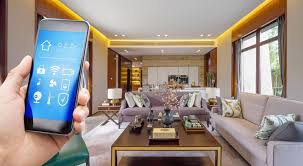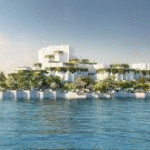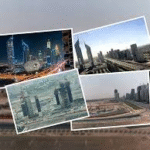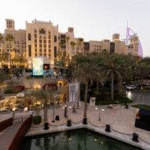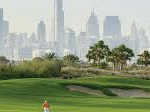Now Reading: The Impact of Green Certifications on Property Values in Dubai
-
01
The Impact of Green Certifications on Property Values in Dubai
The Impact of Green Certifications on Property Values in Dubai
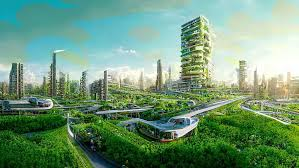
Table of Contents
Green certifications, such as LEED, Al Sa’fat, and BREEAM, are significantly influencing Dubai’s real estate market in 2025, driven by the UAE’s Net Zero by 2050 initiative, growing demand for sustainability, and supportive frameworks like 30–50% R&D tax credits (2026). These certifications validate a property’s environmental performance, enhancing its marketability, rental yields, and capital appreciation, particularly in eco-friendly communities and luxury segments. Building on prior discussions of Dubai’s eco-friendly communities, green buildings, and real estate trends in Sharjah and Ajman, this response examines the impact green certifications on property values in Dubai, detailing financial impacts, key areas, and investment opportunities, with regional comparisons and actionable insights.
How Green Certifications Impact Property Values
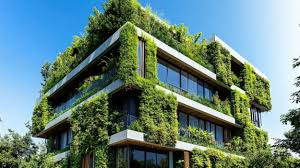
- Premium Pricing:
- Mechanism: Certifications signal energy efficiency, lower utility costs, and alignment with ESG criteria, attracting eco-conscious HNWIs (73,600 HNWIs in Dubai, 2024, +14% year-over-year) and expatriates (88% of population), per – Henley & Partners and Eco-Friendly Communities.
- Impact: Certified properties command 2–5% price premiums, with LEED Gold or Al Sa’fat Platinum-rated buildings in Sustainable City Dubai selling 15–25% higher than non-certified equivalents, per Khaleej Times.
- Comparison: Sharjah’s Sharjah Sustainable City sees 10–15% premiums, while Ajman’s Al Ameera Village achieves 3–5%, per to Green Buildings in Dubai.
- Higher Rental Yields:
- Mechanism: Lower operating costs (20–30% utility savings) and tenant demand for sustainable spaces drive up rental rates.
- Impact: Certified properties yield 6–9% rental returns, 1–2% above non-certified, e.g., Tilal Al Ghaf villas (AED 3–10M, 7–8% ROI) vs. non-green villas (5–6%), per Luxury Villas in Dubai.
- Comparison: Sharjah’s Aljada green rentals yield 4–7%, while Ajman’s Al Helio 2 reaches 8–10%, per Affordable Housing in Ajman.
- Faster Appreciation:
- Mechanism: Green certifications align with Dubai’s Smart City Strategy and Net Zero 2050, boosting demand and long-term value.
- Impact: Certified properties appreciate 6–12% annually, outpacing non-certified (4–6%), e.g., Dubai South green apartments (8–12% growth), per Top 10 Emerging Neighborhoods.
- Comparison: Sharjah’s Nasma Residences sees 5–8% growth, Ajman’s Al Zorah 4–6%, per Sharjah’s Freehold Zones.
- Increased Occupancy Rates:
- Mechanism: 70% of buyers and tenants prioritize ESG-compliant properties, reducing vacancy periods, per Eco-Friendly Communities.
- Impact: Certified communities like Sustainable City Dubai achieve 95–98% occupancy, vs. 85–90% for non-certified, with 30–40% faster leasing, per Bayut.
- Comparison: Sharjah’s Sharjah Sustainable City hits 90–95%, Ajman’s Al Ameera Village 85–90%, per Affordable Housing in Ajman.
- Access to Incentives:
- Mechanism: 30–50% R&D tax credits (2026) and free zone exemptions reduce development costs for certified projects, per R&D Tax Incentives in the UAE.
- Impact: Developers pass savings to buyers, enhancing affordability and value, e.g., Damac Gardens villas (AED 2–5M) benefit from 30% cost reductions, per Green Buildings in Dubai.
- Comparison: Sharjah’s subsidies and Ajman’s Free Zone benefits similarly boost value, per Understanding UAE’s 15% Corporate Tax.
Key Areas and Certified Projects
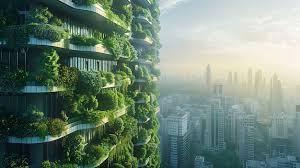
- Sustainable City Dubai:
- Details: Net-zero community with LEED Platinum villas (AED 2–5M, 6–8% ROI) and apartments (AED 800,000–1.5M, 7–9% ROI), per Eco-Friendly Communities.
- Impact on Value: 15–20% price premium, 95% occupancy, 6–8% growth due to 100% solar power and zero waste.
- Project: Phase 4 adds 500 units with BREEAM certification.
- Comparison: Outpaces Sharjah’s Sharjah Sustainable City (10–15% premium).
- Tilal Al Ghaf:
- Details: LEED Gold community with villas (AED 3–10M, 5–7% ROI), per Luxury Villas in Dubai.
- Impact on Value: 10–15% premium, 7–8% yields, 6–8% growth from solar panels and AI systems.
- Project: Serenity Mansions uses recycled materials.
- Comparison: Matches Ajman’s Al Ameera Village (8–9% yields) in eco-appeal.
- Dubai South:
- Details: Al Sa’fat Platinum apartments (AED 600,000–900,000, 7–8% ROI) and villas (AED 1.2–1.8M, 6–7% ROI), per Top 10 Emerging Neighborhoods.
- Impact on Value: 12–15% premium, 8–12% growth, 90% occupancy from green concrete and IoT.
- Project: Green Residences leverages smart grids.
- Comparison: Surpasses Sharjah’s Tilal City (7–10% growth).
- Damac Gardens:
- Details: LEED Silver villas (AED 2–5M, 5–7% ROI) in Al Hebiah, per Green Buildings in Dubai.
- Impact on Value: 8–12% premium, 8–10% rental yields, 6–7% growth from rainwater harvesting.
- Project: Edena integrates AI cooling.
- Comparison: Aligns with Sharjah’s Maryam Island (6–8% yields).
- The Acres:
- Details: BREEAM-certified villas (AED 5–12M, 5–7% ROI) in Dubailand, per Eco-Friendly Communities.
- Impact on Value: 10–15% premium, 6–8% growth, 90% occupancy from solar farms and EV stations.
- Project: Phase 1 features vertical gardens.
- Comparison: Outperforms Ajman’s Al Zorah (4–6% growth).
Quantitative Impact on Property Values
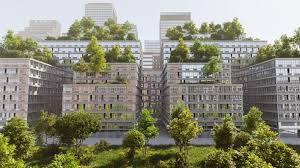
- Price Premiums: 2–5% for LEED Silver/Al Sa’fat Silver, 5–10% for LEED Gold/Al Sa’fat Platinum, 15–25% for LEED Platinum/BREEAM, per Green Buildings in Dubai.
- Rental Yields: Certified properties yield 1–2% higher (6–9% vs. 4–7% for non-certified), e.g., Dubai South apartments at 8% vs. 6% for non-green, per Bayut.
- Appreciation: 6–12% annual growth for certified vs. 4–6% for non-certified, driven by ESG demand, per Top 10 Emerging Neighborhoods.
- Cost Savings: 20–30% utility savings (AED 40,000–60,000/year for villas), enhancing net returns, per Eco-Friendly Communities.
- Sales Velocity: Certified properties sell 30–40% faster, with Sustainable City Dubai units off-market in 20–30 days vs. 50–60 for non-certified, per dubizzle.
Investment Opportunities
- Luxury Certified Villas:
- Areas: Tilal Al Ghaf, The Acres, Damac Gardens.
- Why Invest: 5–7% yields, 6–8% growth, 10–15% premiums, and Golden Visa eligibility (>AED 2M), per Luxury Villas in Dubai.
- Action: Buy off-plan in Serenity Mansions or Edena via Majid Al Futtaim or Damac, using Bayut.
- Affordable Certified Housing:
- Areas: Dubai South, Sustainable City Dubai.
- Why Invest: 7–9% yields, 8–12% growth, and free zone exemptions, akin to Ajman’s Al Helio 2 (10% ROI), per Affordable Housing in Ajman.
- Action: Invest in Green Residences apartments via Emaar, leveraging dubizzle.
- Certified Commercial Spaces:
- Areas: Dubai South, Sustainable City Dubai.
- Why Invest: 5–7% yields, 7–9% growth, and SME demand, similar to Sharjah’s Sajja, per Impact of Infrastructure Projects.
- Action: Target retail in Residential City via Emaar, using PHOREE Real Estate.
- Short-Term Certified Rentals:
- Areas: Damac Gardens, Sustainable City Dubai.
- Why Invest: 8–10% yields from 20.5 million tourists (2024), per Eco-Friendly Communities.
- Action: Purchase villas for Airbnb in Edena, via Damac.
Challenges and Considerations
- Development Costs: Green certifications add 5–10% to costs, though offset by R&D credits, per R&D Tax Incentives in the UAE.
- Certification Complexity: LEED and Al Sa’fat require specialized expertise, similar to Sharjah’s mandates, per Sharjah’s Freehold Zones.
- Market Perception: Some investors undervalue certifications, needing education, akin to Ajman’s Al Zorah challenges, per Affordable Housing in Ajman.
- Tax Compliance: 9% corporate tax and eInvoicing registration by March 31, 2025, incur AED 10,000 penalties, per Understanding UAE’s 15% Corporate Tax.
Recommendations
- Investment Strategy: Target LEED Gold or Al Sa’fat Platinum properties in Tilal Al Ghaf or Dubai South for 6–9% yields and 10–15% premiums.
- Leverage R&D Credits: Invest in certified projects like Damac Gardens, claiming 30–50% credits from 2026, per R&D Tax Incentives in the UAE.
- Due Diligence: Verify certifications via Dubai Land Department (www.dubailand.gov.ae) or RERA.
- PropTech: Use Bayut, dubizzle, or PHOREE Real Estate for market data, per Top 10 Emerging Neighborhoods.
- Tax Planning: Register via EmaraTax (www.tax.gov.ae) by March 31, 2025; consult PwC Middle East.
- Monitor Trends: Track certification impacts via Dubai Municipality (www.dm.gov.ae) and Emirates 24/7.
Impacts
- Premiums: 2–5% (LEED Silver/Al Sa’fat Silver), 5–10% (LEED Gold/Al Sa’fat Platinum), 15–25% (LEED Platinum/BREEAM).
- Yields: 6–9% for certified vs. 4–7% non-certified, 1–2% higher.
- Appreciation: 6–12% annual growth vs. 4–6% non-certified.
- Occupancy: 95–98% for certified (e.g., Sustainable City Dubai) vs. 85–90%, 30–40% faster leasing.
- Incentives: 30–50% R&D credits (2026) reduce costs 30%.
Key Areas/Projects
- Sustainable City Dubai: LEED Platinum villas (AED 2–5M, 6–8% ROI), apartments (AED 800,000–1.5M, 7–9% ROI). 15–20% premium, 95% occupancy. Phase 4. 6–8% growth.
- Tilal Al Ghaf: LEED Gold villas (AED 3–10M, 5–7% ROI). 10–15% premium, 7–8% yields. Serenity Mansions. 6–8% growth.
- Dubai South: Al Sa’fat Platinum apartments (AED 600,000–900,000, 7–8% ROI), villas (AED 1.2–1.8M, 6–7% ROI). 12–15% premium, 8–12% growth. Green Residences.
- Damac Gardens: LEED Silver villas (AED 2–5M, 5–7% ROI). 8–12% premium, 8–10% yields. Edena. 6–7% growth.
- The Acres: BREEAM villas (AED 5–12M, 5–7% ROI). 10–15% premium, 90% occupancy. Phase 1. 6–8% growth.
Opportunities
- Luxury Villas: Tilal Al Ghaf, The Acres (5–7% yields, 10–15% premiums, Golden Visa).
- Affordable Housing: Dubai South, Sustainable City Dubai (7–9% yields, 8–12% growth).
- Commercial: Dubai South, Sustainable City Dubai (5–7% yields, 7–9% growth).
- Rentals: Damac Gardens, Sustainable City Dubai (8–10% yields).
Challenges
- Costs: 5–10% higher for certifications, offset by R&D credits.
- Complexity: LEED, Al Sa’fat require expertise.
- Perception: Investor education needed.
- Tax: 9% corporate tax, eInvoicing by March 31, 2025 (AED 10,000 penalty).
Conclusion
Green certifications like LEED and Al Sa’fat significantly boost Dubai’s property values in 2025, delivering 2–25% price premiums, 6–9% yields, and 6–12% appreciation in communities like Sustainable City Dubai, Tilal Al Ghaf, and Dubai South. Supported by UAE Net Zero 2050, R&D credits, and AED 114 billion in FDI, these properties outperform Sharjah’s Sharjah Sustainable City (10–15% premiums) and Ajman’s Al Ameera Village (3–5%). Investors should target certified off-plan projects via Emaar or Damac, leverage Bayut, and ensure tax compliance by March 31, 2025, to maximize returns in this sustainable market.
READ MORE: Net-Zero Energy Homes in Dubai: Pioneering Sustainable Living in 2025
WATCH MORE: https://www.instagram.com/reel/DEh485pSFFc/




